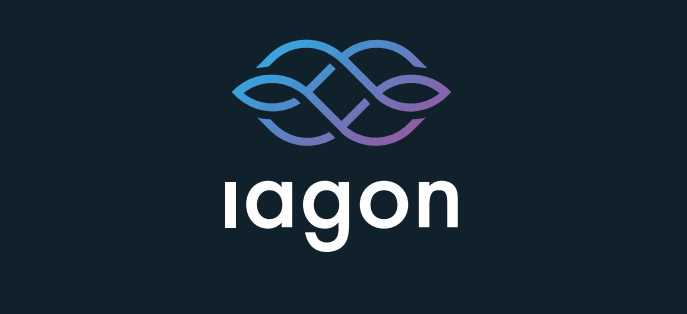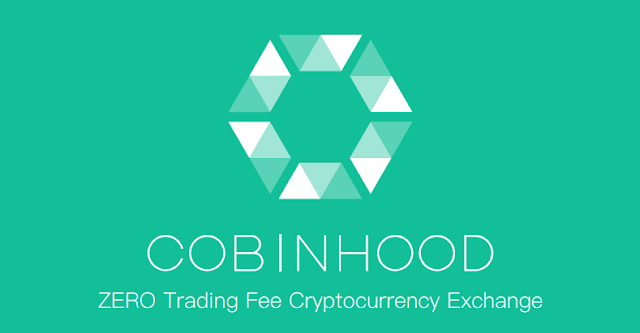All About Iagon And Review
All About Iagon And Review

Introduction
IAGON is an Open Source platform for harnessing the storage capacities and processing power of multiple computers over a decentralized Blockchain grid. IAGON utilizes enables to store big data files and repositories , as well as smaller scales of files, and to carry out complex computational processes, such as those needed for artificial intelligence and machine learning operations , within a fully secure and encrypted platform that integrates blockchain, cryptographic and AI technologies in a user-friendly way. The size of the cloud services market providing both storage capacities and computational processing capabilities to companies and to corporates is estimated by 45 billion USD per annum and it steadily grows. The market is dominated by four major players:AWS,Google Cloud, Microsoft and IBM, all utilize central and less trusted storage and computation facilities .Due to their oligopolistic dominance ,the four providers of cloud services set high pricing levels. These providers are also capable of hampering any competition and preventing new market entrants from competing with them, due to the broad scale oftheir operations and their substantial investments indata centers, servers andstoragefacilities.
Iagon AI-Based Computational Processes
Like a human brain, AI and machine learning algorithms require inputs of data to deduce an inference. Data mining is the computing process of discovering patterns in large data sets and helps reduce large sets of data structures to allow machine learning algorithms to make decisions and inferences. Consequently, as organizations and companies accumulate large datasets as a part of their day-to-day operations virtually on every aspect of their performance , suppliers and clients , they seek new ways to apply AI and machine learning methods to derive new managerial insights from the data on a continuous basis. Nonetheless , AI and machine learning tools for analyzing vast amounts of data require large volumes of computational power that organizations often lack, hence requiring them to subscribe to a commercial cloud service and uploading their sensitive data files into another company ’s servers . Due to the confiden — tial nature of data and its commercial value, many companies avoid doing so, hence not benefitting from the potential value of analyzing their databases with advanced AI methods.
The Blockchain technology provides a unique and fully secure solution towards processing , storing and distributing data and maintaining their consistency and integrity that can be used for use cases like decentralized processing . The Blockchain is simply blocks of data hashed together and chained using previous hashes and its current block to maintain consistency across the chain (Vijayan , 2017 ). Blockchains use the SHA 256 algorithm to create a hash . The unique nature of the hash makes its resource intensive to crack as the SHA256 hash can only be broken today through brute force with computational power that is not avail- able yet in the commercial hardware market (Vijayan, 2017). Distributed data mining of large datasets was introduced by the SETI Institute through its BOINC program (Estrada et al., 2009). The introduction of ‘Bitcoin’ and the proof of work mechanism allowed a framework for providing incentives to data miners for work and energy to accomplish a large series of computations expanded to process data over a decentralized network (Nakamoto, 2008). There are many projects ongoing in terms of providing secure storage over a decentralized network. A decentralized storage network is defined as a cloud platform where nodes either store a part of the data or file or the entire chain of data in a blockchain. Some of the more well-known names in this space are FileCoin, IPFS, SiaCoin, Storj, NextCloud, and NEM’s Mijin project (see e.g. Protocol Labs, 2017). Reliability and privacy on a decentralized network can be a major issue. Most decentralized networks are not equipped to recover lost data in the event the hosting node experiences hardware crashes or nodes with malicious intent configure files in order to hack the file recipient (a common problem that plagues torrent). IAGON was built not only to serve the decentralized network but also work with current data storage facilities like SQL and NoSQL databases. The approach taken with IAGON is unique to the point that IAGON utilizes is machine learning algorithm to distribute load across a decentralized network for processing and then encrypts/decrypts data which flows through its system. There are many use cases that IAGON can serve. IAGON can provide secure storage over centralized, clustered or decentralized networks, distribute data processing load across its network of data miners for data analytics, provide a secure solution for creating smart contracts over the Blockchain, or serve to identify honest and attacking nodes within a system.
The Blockchain technology provides a unique and fully secure solution towards processing , storing and distributing data and maintaining their consistency and integrity that can be used for use cases like decentralized processing . The Blockchain is simply blocks of data hashed together and chained using previous hashes and its current block to maintain consistency across the chain (Vijayan , 2017 ). Blockchains use the SHA 256 algorithm to create a hash . The unique nature of the hash makes its resource intensive to crack as the SHA256 hash can only be broken today through brute force with computational power that is not avail- able yet in the commercial hardware market (Vijayan, 2017). Distributed data mining of large datasets was introduced by the SETI Institute through its BOINC program (Estrada et al., 2009). The introduction of ‘Bitcoin’ and the proof of work mechanism allowed a framework for providing incentives to data miners for work and energy to accomplish a large series of computations expanded to process data over a decentralized network (Nakamoto, 2008). There are many projects ongoing in terms of providing secure storage over a decentralized network. A decentralized storage network is defined as a cloud platform where nodes either store a part of the data or file or the entire chain of data in a blockchain. Some of the more well-known names in this space are FileCoin, IPFS, SiaCoin, Storj, NextCloud, and NEM’s Mijin project (see e.g. Protocol Labs, 2017). Reliability and privacy on a decentralized network can be a major issue. Most decentralized networks are not equipped to recover lost data in the event the hosting node experiences hardware crashes or nodes with malicious intent configure files in order to hack the file recipient (a common problem that plagues torrent). IAGON was built not only to serve the decentralized network but also work with current data storage facilities like SQL and NoSQL databases. The approach taken with IAGON is unique to the point that IAGON utilizes is machine learning algorithm to distribute load across a decentralized network for processing and then encrypts/decrypts data which flows through its system. There are many use cases that IAGON can serve. IAGON can provide secure storage over centralized, clustered or decentralized networks, distribute data processing load across its network of data miners for data analytics, provide a secure solution for creating smart contracts over the Blockchain, or serve to identify honest and attacking nodes within a system.
Iagon Multiple Blockchain Support
IAGON aim at providing its users and miners complete
flexibility and freedom of choice in providing and consuming decentralized cloud services . Hence, IAGON will
provide a multiple Blockchain solution. Running its cloud storage and processing operations both on
the Ethereum Blockchain and on Tangle.
Users and miners can choose either Ethereum or Tangle to
fully securely store their files, to process
computational tasks , to pay and to receive IAGON tokens for
cloud services , and primarily to benefit
from huge advantages in gaining access to the market’s
prominent and state-of-the-art technologies.
Iagon Smart Computing Grid Platform And AI-Tracker Technology
Iagon Smart Computing Grid Platform And AI-Tracker Technology
IAGON’s Smart Computing Grid is equivalent to any other
power grid (such as solar production of electricity):
• It connects multiple producers to customers
• Smart Computing Grid fulfils the demand for the necessary
resource
• It transfers unused resources to customers in need (CPU
and GPU processing power and
storage space), and
• It benefits the miners providing processing power and
storage space to the grid without
requiring efforts
when their servers and computers are not used by them.
The Smart Computing Grid is based on advanced Artificial
Intelligence components thatinclude more than 100 MachineLearning algorithms ,methods and techniques
thatintegrate toformourAI-Tracker system.AI-Tracker is the brain behind IAGON ’s Smart Computing Grid . It
optimally allocates encrypted file slices to the miners ’ free storage spaces and computational tasks to the miners
’free (idle)CPUs and GPUs that compose the Smart Computing Grid.
AI-Tracker is a dynamically learning system that continuously analyzes past and current data streams that reflectthe availability of storage space and processing capacities ofminers.AI-Tracker carries outthe tasks of optimally allocating and transmitting encrypted file slices to designated storage spaces , allocation for processing tasks for rapid , optimal performance ofthe grid and identification ofrogue nodes that should be blocked and removed from the grid and continuously fine tuning the grid ’s attributes to optimize its performanceat any time, see figure:
AI-Tracker is a dynamically learning system that continuously analyzes past and current data streams that reflectthe availability of storage space and processing capacities ofminers.AI-Tracker carries outthe tasks of optimally allocating and transmitting encrypted file slices to designated storage spaces , allocation for processing tasks for rapid , optimal performance ofthe grid and identification ofrogue nodes that should be blocked and removed from the grid and continuously fine tuning the grid ’s attributes to optimize its performanceat any time, see figure:
Blockchain

IAGON leverages the Blockchain technology to maintain
honesty of nodes across IAGON distributed data mining algorithm. The Blockchain uses SHA256 algorithm of
previous blocks to maintain a chain link to its historical state (in this case data).This allows IAGON to
incentivize miners on its platform to process data honestly and to guard against deliberate manipulation of the
data output. Using the Blockchain , IAGON’s machine learning algorithm can quickly identify if a data
output mined from a block is actually a valid part of the block. This can be achieve within the framework of a
simple Blockchain similar to that used by ‘Bitcoin’ by hashing the inputs with the hash of the previous block.
Genesis block are created internally within the private blockchain . The Blockchain presents a unique
approach towards sharing data across a decentralized network. The data can be stored, processed and
validated by a network of nodes or it can be stored and validated within an internal facility where the
processing is outsourced to a decentralized
network of nodes . The Blockchain allows consistency to be
maintained throughout the entire data
structure.
One of the major reason the Blockchain is maintained
privately is to compete with big data databases in the market in terms of volume , variety and velocity . A
private Blockchain allows for the research,
development and facility cost to be borne by IAGON’s team
with input from various stakeholders as oppose to getting multiple parties to reach a large enough
consensus before making big development changes to improve the system . In order to keep up with massive read
and write operations within its private
Blockchain , IAGON might in the future scale to introduced
multiple private Blockchains to reduce the potential of a single point of failure which can bring the
down whole system by using a masterless architecture.





Komentar
Posting Komentar